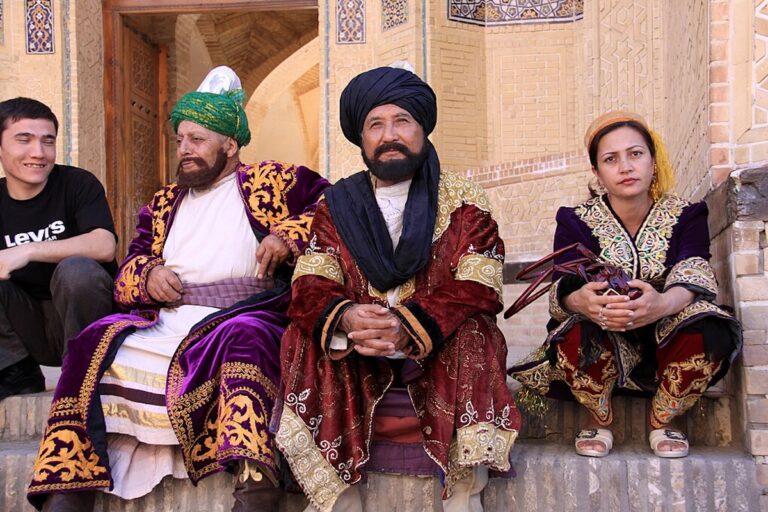The Ukraine war has brought back vividly the specter of great power rivalry that some considered a relic of the 20th century.
As the dust begins to settle on the immediate effects of this conflict, a new and perhaps more subtle arena for the competition is taking shape in Central Asia.
Observers have long noted the region’s strategic importance, but in the expected period of readjustment and re-engagement after Ukraine normalization, it is seen as a potential focal point for an increasing concentration of Russian, Chinese, and U.S. interests. Central Asia is positioned. palpable tension.
Importantly, unlike other disputed regions, two of these powers share extensive borders with the region, adding a layer of geographic proximity and exacerbating the stakes.
Central Asia, consisting of Kazakhstan, Kyrgyzstan, Tajikistan, Turkmenistan, and Uzbekistan, is at a critical crossroads.
Historically a crossroads of empires, the region’s post-Soviet independence has been a delicate balance, overcoming the influence of its powerful neighbors.
However, the absence of strong indigenous collective security systems leaves them vulnerable. Often referred to as the world’s least integrated region, the region’s fragmented political and economic landscape has created a geopolitical vacuum that great powers are increasingly keen to fill. It has become.
This lack of a unified regional identity may seem like a weakness, but paradoxically it presents both challenges and opportunities for navigating the tide of great power competition.
Concentration of interests cannot be denied. For Russia, Central Asia remains an important sphere of influence, a buffer zone against Western aggression, and an important transit route.
The war in Ukraine strained Moscow’s resources and highlighted the importance of the “near abroad” for economic sustenance and alternative trade routes.
Through its Belt and Road Initiative (BRI), China views Central Asia as a linchpin of continental connectivity, a key source of resources, and a strategically important aspect of its westward expansion.
While experiencing fluctuating periods of engagement, the United States has maintained an interest in counterterrorism, promoted democratic governance (albeit with a diminishing emphasis), and, more fundamentally, maintained its focus on counterterrorism in this strategically important region. preventing unchecked Russian or Chinese domination in the United States.
However, this concentration of interests among great powers is not inherently good. The potential for friction is obvious. Russia, weakened by the conflict in Ukraine, is wary of China’s expanding economic and political influence.
Although current rhetoric emphasizes partnership, the long-term effects of China’s rise in the region are a source of anxiety for Moscow. Meanwhile, the United States is watching with concern that both Russia and China could expand their authoritarian models and limit democratic space in Central Asia.
Infrastructure projects, security cooperation agreements, and even cultural exchanges have become subtle but important sites of power projection. Without a strong regional framework, these competing interests risk escalating into the modern Great Game, albeit with more actors and more complex dynamics.
There’s a potential salvation here: the C5+1 framework. This diplomatic platform, which brings together five Central Asian countries and the United States, provides a unique opportunity to foster informal collective action while maintaining the flexibility individual states need to engage with all external powers. .
Unlike strict security alliances that inevitably alienate at least one major power, the C5+1 provides a forum for dialogue, coordination on matters of mutual concern (border security, economic development, environmental issues, etc.), and And importantly, Central Asian countries articulate their common interests.
C5+1’s strength lies in its informality. This would allow Central Asian countries to engage with the United States without being perceived as directly challenging Russia or China. Similarly, it provides space for the United States to maintain its presence and influence in the region without explicit military engagement that could be seen as provocative.
This flexible structure can be used to build resilience against undue pressure from a single great power. C5+1 can contribute to strengthening regional identity by fostering intraregional cooperation on practical issues, making Central Asia less likely to simply become a battleground for external competition. You can.
However, C5+1 is not a panacea. Its effectiveness depends on the continued efforts of all parties and the ability of Central Asian states to present a united front. Internal divisions and varying levels of coordination with external forces could undermine that potential.
Furthermore, this framework needs to evolve to address escalating geopolitical complexity, moving beyond primarily economic and development concerns to include more nuanced discussions of security and strategic autonomy. be.
The post-Ukraine situation positions Central Asia as a region ripe for intensifying great power competition. The absence of robust regional integration and collective security mechanisms creates vulnerabilities that external actors seek to exploit for their own benefit.
But within this challenge also lies an opportunity. Due to its inherent flexibility and inclusive nature, the C5+1 framework offers a promising path forward to foster collective action and empower Central Asian countries to navigate this complex environment.
Whether Central Asia becomes a mere theater of great power rivalry or a region that successfully leverages its strategic location to its own interests will primarily define its trajectory, not cooperation, but competition.
For policymakers in Washington, Beijing, and Moscow, understanding and constructively addressing this dynamic is critical to ensuring stability and prosperity not only in Central Asia but also in the wider Eurasian continent. .
Milas Ziembayev is the head of the foreign policy and international research program at the Maksut Nalikbayev Institute for Network Development (MIND) in Astana, Kazakhstan.


